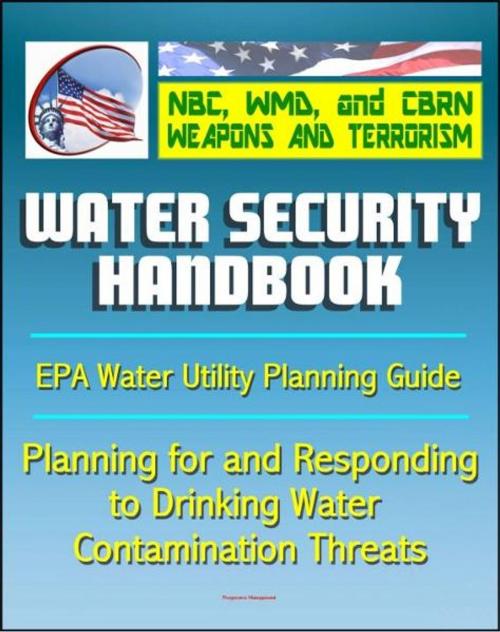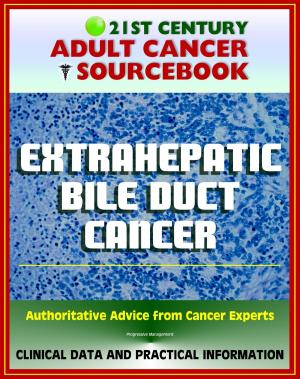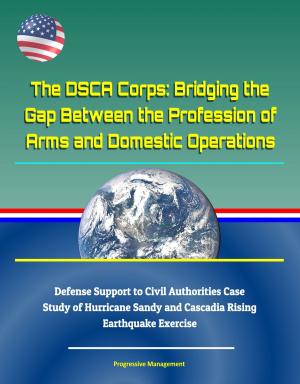21st Century NBC WMD CBRN Weapons and Terrorism: Water Security Handbook - Planning for and Responding to Drinking Water Contamination Threats and Incidents (Water Utility Planning Guide)
Nonfiction, Science & Nature, Science, Biological Sciences, Environmental Science, Social & Cultural Studies, Political Science| Author: | Progressive Management | ISBN: | 9781465846303 |
| Publisher: | Progressive Management | Publication: | March 5, 2012 |
| Imprint: | Smashwords Edition | Language: | English |
| Author: | Progressive Management |
| ISBN: | 9781465846303 |
| Publisher: | Progressive Management |
| Publication: | March 5, 2012 |
| Imprint: | Smashwords Edition |
| Language: | English |
Converted for accurate flowing-text ebook format reproduction, this important guide from the Environmental Protection Agency (EPA) provides official guidance regarding planning for - and responding to - drinking water contamination threats and incidents. The Water Security Handbook was developed by the U.S. EPA to help water utility officials protect the water system and respond effectively to threats and contamination incidents. EPA also wrote this Handbook in response to calls for a short, simplified document that summarizes the comprehensive document entitled Response Protocol Toolbox: Planning For and Responding to Drinking Water Contamination Threats and Incidents (also known as the Response Protocol Toolbox). This Handbook describes the basic concepts and procedures involved in water security planning and threat response. Together, the Handbook and Response Guidelines provide succinct recommendations concerning water security planning and response actions. While the Response Protocol Toolbox is aimed at all utilities, agencies and other organizations that may be involved in responding to drinking water threats and incidents, this Handbook is aimed primarily at water utility managers and staff. This Handbook should help managers: Understand the basics of responding to contamination threats and incidents; Plan for responding to water contamination threats and contamination incidents; Learn about key concepts of water security covered in the Response Protocol Toolbox; and Learn how to use the Response Protocol Toolbox, the Response Guidelines, and other available tools to help you provide water security. In addressing water utility managers, the guide states: Contamination of a drinking water system can cause illness, disease, or even death. A water system can be contaminated, damaged or disrupted through intentional terrorist or criminal actions or by an accident. Intentional contamination poses one of the most serious threats to a water system because of the intent to harm human health or cause damage. When a contamination threat is received or a contamination incident happens, it is critical that you act quickly and effectively to protect public health and the environment. This Handbook should help you to develop your own utility s plan for quickly and effectively responding to contamination threats or contamination incidents, even in situations where information may be limited. This Handbook was written for water system owners and managers, water utility emergency response managers (WUERMs), and utility staff who maintain public and private drinking water systems, regardless of their size. In addition, anyone who may be involved in an emergency response concerning drinking water, such as public health officials, emergency responders, law enforcement officials, environmental protection officials and other government officials should read this Handbook. Utility managers in the wastewater sector may find this Handbook useful because it describes a general process for threat and incident response.
Converted for accurate flowing-text ebook format reproduction, this important guide from the Environmental Protection Agency (EPA) provides official guidance regarding planning for - and responding to - drinking water contamination threats and incidents. The Water Security Handbook was developed by the U.S. EPA to help water utility officials protect the water system and respond effectively to threats and contamination incidents. EPA also wrote this Handbook in response to calls for a short, simplified document that summarizes the comprehensive document entitled Response Protocol Toolbox: Planning For and Responding to Drinking Water Contamination Threats and Incidents (also known as the Response Protocol Toolbox). This Handbook describes the basic concepts and procedures involved in water security planning and threat response. Together, the Handbook and Response Guidelines provide succinct recommendations concerning water security planning and response actions. While the Response Protocol Toolbox is aimed at all utilities, agencies and other organizations that may be involved in responding to drinking water threats and incidents, this Handbook is aimed primarily at water utility managers and staff. This Handbook should help managers: Understand the basics of responding to contamination threats and incidents; Plan for responding to water contamination threats and contamination incidents; Learn about key concepts of water security covered in the Response Protocol Toolbox; and Learn how to use the Response Protocol Toolbox, the Response Guidelines, and other available tools to help you provide water security. In addressing water utility managers, the guide states: Contamination of a drinking water system can cause illness, disease, or even death. A water system can be contaminated, damaged or disrupted through intentional terrorist or criminal actions or by an accident. Intentional contamination poses one of the most serious threats to a water system because of the intent to harm human health or cause damage. When a contamination threat is received or a contamination incident happens, it is critical that you act quickly and effectively to protect public health and the environment. This Handbook should help you to develop your own utility s plan for quickly and effectively responding to contamination threats or contamination incidents, even in situations where information may be limited. This Handbook was written for water system owners and managers, water utility emergency response managers (WUERMs), and utility staff who maintain public and private drinking water systems, regardless of their size. In addition, anyone who may be involved in an emergency response concerning drinking water, such as public health officials, emergency responders, law enforcement officials, environmental protection officials and other government officials should read this Handbook. Utility managers in the wastewater sector may find this Handbook useful because it describes a general process for threat and incident response.















